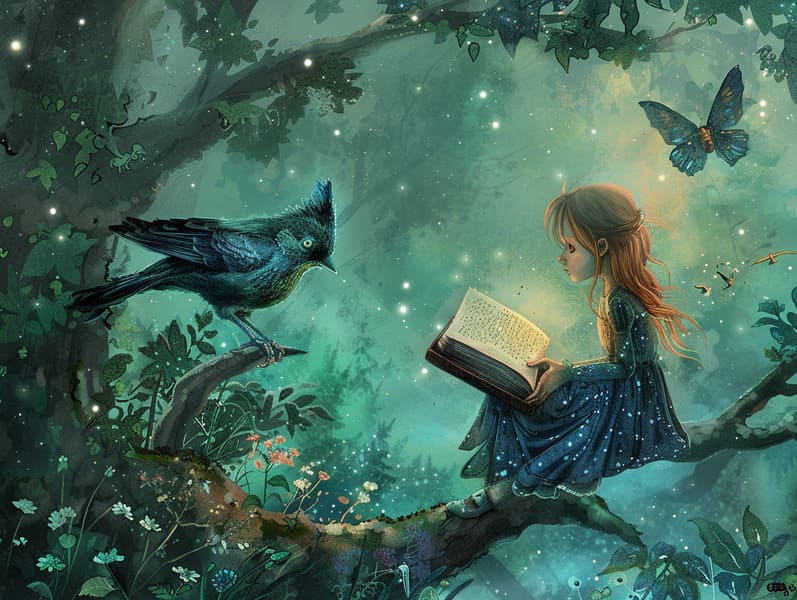Delving into the Background of Timeless Fairy Tales with the Timeless Grandeur.
Delving into the Background of Timeless Fairy Tales with the Timeless Grandeur.
Blog Article

Famous fairy tales have old origins. These tales have been whispered from one generation to the next centuries before they were ever inscribed. They originated from a variety of civilizations, including American traditions. They were initially narrated among older generations, often carrying themes and messages pertaining to the societal norms and beliefs of the time.
The famous Grimm duo, the two Grimm brothers, were among the first to gather and publish many of these beloved narratives. Their volume, "Grimm's Fairy Tales," included classics like "Cinder Maid," "Little Brother and Little Sister," and "Snow White," which have since become hallmarks in the world of iconic fairy tales. Similarly, Andersen's delightful tales, such as "The Story of the Little Mermaid," and "The Duckling's Story," have enchanted hearts worldwide, guaranteeing their place in the pantheon of famous fairy tales.
Despite their historical roots, traditional fairy tales remain as important as ever, especially as children's bedtime stories. These magical stories are now available in multiple formats, including beautifully illustrated books, fantastical animations, and internet fairy tales.
Their enduring popularity can be traced to several charming aspects:
Vital Lessons: Old fairy tales often share important moral lessons. Narratives like "The Wolf and the Liar" teach the benefit of truthfulness, while "The Hare and the Tortoise" highlight the benefits of tenacity and humility. These tales offer children clear distinctions between ethical and unethical, guiding their moral compass in a tender yet impactful way.
Compassion and Knowledge: Fairy tales frequently involve individuals facing problems and hurdles, prompting kids to empathize with their struggles and root for their triumphs. For instance, "Beauty and Her Beast" shows us the necessity of looking beyond appearances to comprehend the inner spirit of a being, developing compassion and recognition.
Cultural Comprehension: Many fairy tales are steeped in the cultural contexts from which they developed. Engaging with these tales can provide illuminating insights into different social structures, encouraging a sense of world respect and understanding.
Inventiveness and Fantasy: The mythical elements in traditional fairy tales—supernatural elements—engender children’s creative thoughts. These tales transport readers to mythical realms, revitalizing imaginative ideas and a sense of enchantment that continues a lifetime.
Old these guys fairy tales are not only charming but also teaching. They work as whimsical tools in advancing various thinking and feeling skills in children. When timeless fairy tales are spoken out loud, they foster language acquisition by presenting new linguistic elements and detailed sentence structures. This practice also cultivates hearing perception and attention span, as young ones concentrate deeply, enthusiastic to see what happens next.
Furthermore, conversing about the themes and characters of timeless fairy tales can strengthen thinking skills and thinking skills. Young readers learn to discover patterns, expect results, and grasp cause and effect. These deliberations also boost children speak out their thoughts and feelings, promoting their emotional intelligence.
In today’s high-tech era, the existence of web-based fairy tales has made these fairy tales more acquirable than ever. Internet sites and applications give extensive collections of ancient fairy tales that can be experienced or listened through anytime, anywhere. Fairy tales read aloud are particularly favored, giving an enjoyable way for little ones to appreciate these mesmerizing stories. Sound books and read-out-loud stories take characters and settings to life, often enhanced by enchanting music and songs that enrich the narrative experience.
The timeless charm of classic fairy tales lies in their ability to shift to modern days while holding onto their main lessons. Contemporary adaptations of these tales often spotlight more inclusive characters and modern settings, making them relatable to today’s audience. However, the fundamental themes of fearlessness, charity, and equity remain unchanged, continuing to resonate with listeners of all ages.
Timeless fairy tales also offer a sense of serenity and closeness. They grant a coherent narrative with a definite beginning, middle, and end, often wrapping up with the ending of conflicts and the triumph of virtue over corruption. This regularity can be soothing for little ones, imparting a sense of consistency in an always shifting world.
Traditional fairy tales continue to spellbind and coach new generations, maintaining their charm and importance in modern society. As bedtime stories for kids, they yield a perfect blend of captivation and insight, backing moral values, empathy, and creativity. The presence of online fairy tales and the popularity of fairy tales recited secure that these old stories remain within reach to new generations.
By holding onto and recounting these tales, we continue to admire the rich tapestry of fantasy and cultural heritage. Whether you are browsing a vividly illustrated book, browsing a web collection, or listening through an voice book, the mystique of Grimm's fairy tales is always within reach. These fairy tales point out of the unfading magic of stories and its ability to unify us across time and space.
Even if you are viewing a artistically illustrated book, exploring a online collection, or hearing an sound book, the radiance of Grimm's fairy tales is always within reach.
These fairy tales highlight of the enduring presence of tales and its ability to unify us across centuries and lands, creating a bond that delights and instructs alike.